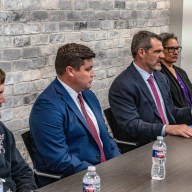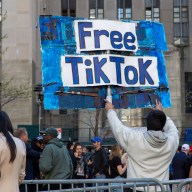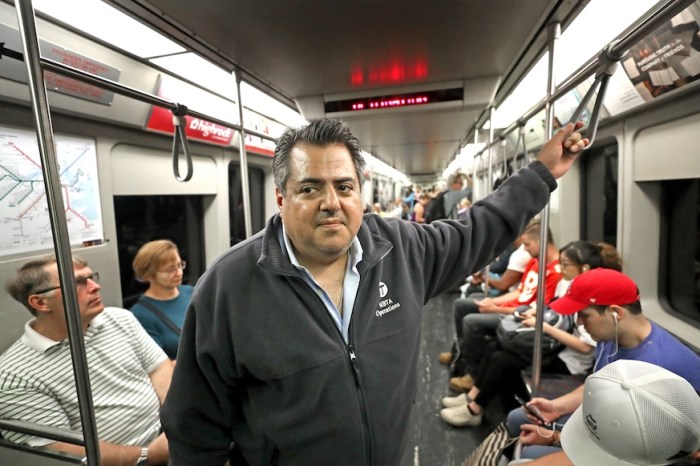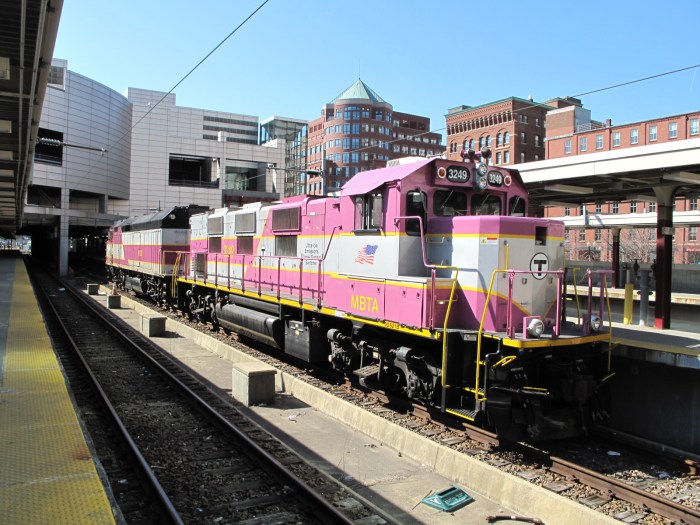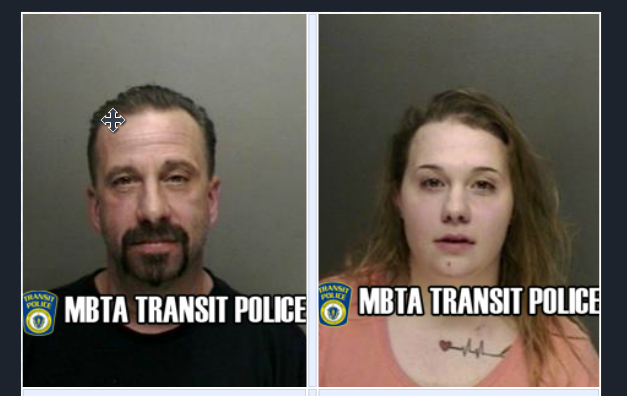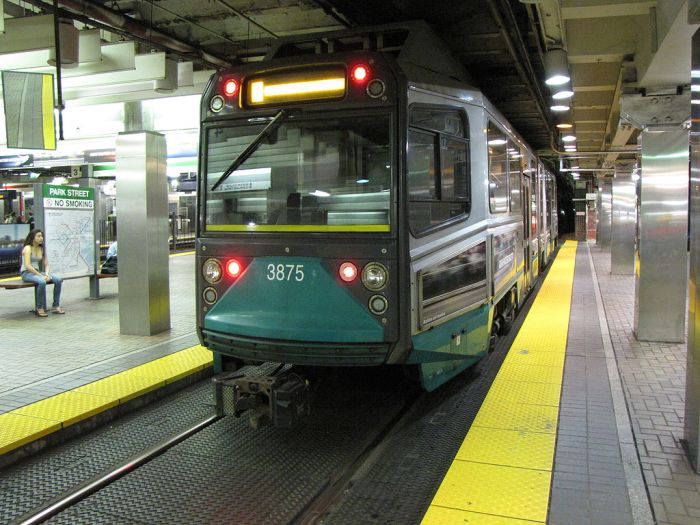Adela Gonzalez and Eduardo Barrientos recently spent six hours over the course of a week at the Maverick MBTA station.
They weren’t waiting all that time for a bus — though riders say that wouldn’t be so unusual there.
The teenagers were interviewing riders about the future of public transportation in Boston. And as expected, riders had a lot to say.
Gonzalez, 18, and Barrientos, 17, are part of a street team effort for the MBTA’s “Focus40” initiative, a 25-year plan to improve and overhaul the system by 2040.
Focus40 kicked off in 2015, when the harsh reality of the MBTA’s aging system and equipment was exposed during a winter season that dropped more than 100 inches of snow on the Boston area. The MBTA’s above-ground rail sections were all-but snowed under in places, causing extensive delays and angering riders. Improvements have already been made, officials say. The city budgeted $22.5 million for snow removal this winter and the MBTA said it would install new third rails and affix train plows along the Red Line. Officials acknowledge serious problems still exist and can’t be fixed by simply adding more equipment. A major overhaul may be required.
The first stage of the Focus40 project was mainly internal, said Scott Hamwey, the MBTA’s manager of long-term planning. Officials analyzed the existing system and mapped out future scenarios — including weather — and what factors could affect those. Now, officials are developing ideas for what improvements to make. Hamwey said it is important to hear from the people who actually use the transit system. The MBTA is the nation’s fifth largest mass transit system, with about 1.3 million passenger trips on an average weekday, according to its website. “There are a lot of expansion ideas we hear about all the time from our investors internally, but we also just felt like it was really important to get out to our customers directly and to hear from them about what they’d like us to do,” he said. That includes deploying its street team, which meets residents in their own neighborhoods to ask them questions.
“You tend to get the usual suspects in meetings,” Hamwey said. “They’re not always transit-dependent riders, like from lower-income communities, and we don’t get a lot of younger people.” Gonzalez and Barrientos conducted surveys at Maverick station, asking nearly 100 people their thoughts about improvements the system could make to help make their commute smoother and easier.
“I think some people, when we went up to them, were surprised that such young people were out here serving and asking them questions,” Barrientos said. “But it made them feel even more comfortable when it was coming from a youth member; we might share the same opinion and we both can relate.” Barrientos and Gonzalez are youth organizers for GreenRoots Chelsea, a community organization that focuses on environmental and transit issues, which is partnering with the MBTA for this project.
Chelsea is one of the cities that could benefit the most from improved transit options, said Maria Belen Power, associate executive director at GreenRoots.
“Chelsea is 1.8 square miles with 40,000 residents — one of most densely populated communities in the Commonwealth,” she said. “And also one of most low-income communities, so access to public transit is key for residents.” Chelsea has no T stations, so the buses become “incredibly overcrowded,” Power said. She often hears residents lament the “contradiction” of Chelsea: it’s one of the most popular communities. But it also has among the fewest transit options. “A lot of times [Chelsea residents] are struggling to be at the table, struggling to be represented,” she said.
While surveying riders, Gonzalez and Barrientos heard suggestions that included adding more hand sanitizers around bus stops to simply adding more buses.
The MBTA recently rolled out about 300 new buses. It is also looking at dedicated bus lanes to zip commuters through traffic quicker.
The authority has its sights on improving the entire system, not just one community.
It has partnered with colleges throughout Boston, along with other organizations like 826 Boston, a youth writing center, and Nuestra Comunidad, a nonprofit that provides housing assistance to low-income families in Dorchester, Mattapan and Roxbury. If you don’t encounter a surveyor, you can also submit ideas online at mbtafocus40.com.
“It’s important to engage the people who frequent the T day to day,” said Monica Dean, director of Nuestra Comunidad’s community organizing. “Had they not been at the table, a lot of issues or concerns would be overlooked, and the MBTA would proceed thinking they’re addressing problems, but they would only be putting a Band-Aid on things.”









